The IBHOF Class of 2019 – How I voted and why: Part one
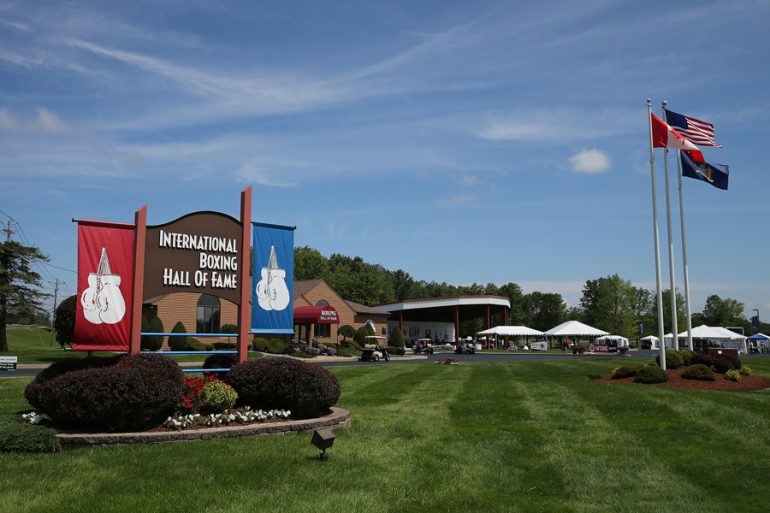
Moments after mailing my ballot for the International Boxing Hall of Fame’s Class of 2018, my thoughts shifted to whom might comprise the next set of first-ballot candidates for the Class of 2019. Of the names that came to mind, one, at least to me, was a lock for enshrinement: Thailand’s Pongsaklek Wonjongkam. Two main pillars supported his candidacy: First, his flyweight record 17 consecutive title defenses during his first reign between March 2001 and July 2007, and second, the fact he regained the belt nearly three years later, in Tokyo, against an undefeated Japanese champion in Koki Kameda, after which he added four successful defenses to swell his overall total to 21 before finally losing it, at age 34, to Sonny Boy Jaro in March 2012. He won seven of his final eight fights before hanging up the gloves to advance his record to 90-5-2 (with 47 knockouts) and to start his clock for what I thought would have been inevitable first-ballot election.
But to borrow a song title from Murray Head, “One Night in Bangkok” changed everything.
Rumors had circulated about a comeback fight – a rematch with the also-retired Kameda – that was tentatively set for this past May 5 in Tokyo. But while that fight fell through, Wonjongkam officially stopped his enshrinement clock by winning an eight-round decision over the 16-20 Manot Comput April 8 in Bangkok to win the “interim Thai super bantamweight title.”

Photo courtesy of Thai Fight News
Those 24 minutes of ring time not only resulted in Wonjongkam’s 91st career victory, it also shifted the Hall of Fame landscape. That’s because none of the other first-ballot candidates – longtime featherweight titlist Chris John, two-division beltholder Rafael Marquez or three-time super middleweight king Mikkel Kessler – were thought to be on the same level as Wonjongkam, in terms of induction prospects and, as a result, created a phenomenon unique to recent voting periods: A wide-open race. Because of that, I knew this year’s whittling-down process would require deeper and lengthier scrutiny, especially because I have chosen to publicly reveal – and to publicly justify – my ballot selections for the fifth consecutive voting cycle.
I began this year’s process on a far later date than usual – October 13 – because (1) an avalanche of time-sensitive CompuBox research required my full attention and (2) I wanted to conduct my deliberation with an uncluttered mind.
At precisely 11:30 a.m. I opened the envelope containing the four ballots I am privileged to consider: The Moderns (fighters whose last bout was staged no earlier than 1989), the Old-Timers (this year’s slate, which alternates from year to year, considers boxers whose last bouts occurred no earlier than 1943 and no later than 1988, which, under the protocol adopted a few years ago, is defined as the “Late Era Old-Timers”), the Non-Participants (those who made contributions to the sport apart from roles as boxers or observers, such as promoters, administrators, managers, trainers, commissioners, publicists, judges, referees, matchmakers and timekeepers) and the Observers (print and media journalists, publishers, writers, historians, photographers, artists and screenwriters). Voters are limited to a maximum of five checkmarks among the 32 names on the Modern ballot, the 40 names on the “Late Era Old-Timers” ballot, the 35 names on the Non-Participants ballot and the 30 names on the Observers ballot. With the quality of the names and the limited number of checkmarks given each elector, voters are (or should) be required to apply a high bar when choosing inductees.
Hall of Fame electors are granted a wide berth, in terms of the criteria they use to make selections. As longtime readers know, the standard I use for the Modern and Old-Timer ballots is a combination of sustained command over their era, the level of opponents they conquered, my perception of the skills they used to beat their rivals and, if applicable, the historic impact they had on the sport. Some voters find it difficult to find five fighters who fit their criteria but, for me, I’ve almost always ended this process regretting I couldn’t place checkmarks before every name I felt was worthy of them, a feeling that is especially true of the Moderns. That certainly will be the case with this year’s wide-open cycle, which has forced me to reconsider names I’ve had to bypass due to the number of “shoo-in” candidates.
As for the Observer and Non-Participant ballots, that process is more difficult because one has to judge whether this trainer was a better trainer than this promoter was as a promoter or than that referee was as a referee. These are the most subjective ballots of all and, because of that, it’s as much gut-check as empirical exercise. For me, my decisions on these ballots are determined by whose resumes resonate strongest with me – and me only. Others can – and do – make persuasive arguments for other nominees but, for me, it’s an individual decision in which there are few overtly right or wrong answers.
One method I use to ease the process on the Non-Participant ballot is to list the names of those with similar jobs and try my best to determine if there is a strongest promoter among the promoters, the best administrator among the administrators and so on. If there is only one entry for a certain task, then I do my best to judge that candidate on his own merits but if I feel two members of the same category deserve elevation, I give myself the freedom to vote for both.
Such was the case for my Non-Participant ballot, as I voted for two promoters in Don Elbaum and Bill Mordey. In Part One of my most recent Travelin’ Man article, I said I knew of only two teenaged promoters but it wasn’t until I looked into Elbaum’s resume that I knew he was a third, for, according to his New Jersey Boxing Hall of Fame biography, Elbaum said he promoted his first fight at 17 – two years after he started matchmaking.
Elbaum’s life in boxing has stretched at least six decades – he has kept his age a secret from most – and it has encompassed multiple realms: Fighter (amateur and pro), promoter, matchmaker, writer and adviser. The depth, breadth and length of his life in boxing is exceeded by very few, as is his promotional imagination. (He once drew a full house for a main event pitting two winless journeymen for the supposed title of “worst heavyweight in the world.” The loser was contractually obligated to retire but the bout was judged a draw.) Additionally my Elbaum education was further because I hung out with fellow scribes Jack Obermayer and J.R. Jowett, both of whom spoke glowingly of him. Amazingly this is Elbaum’s first appearance on the IBHOF ballot and I believe it will be the last because I’m confident that enough of my peers will feel he is deserving of induction.
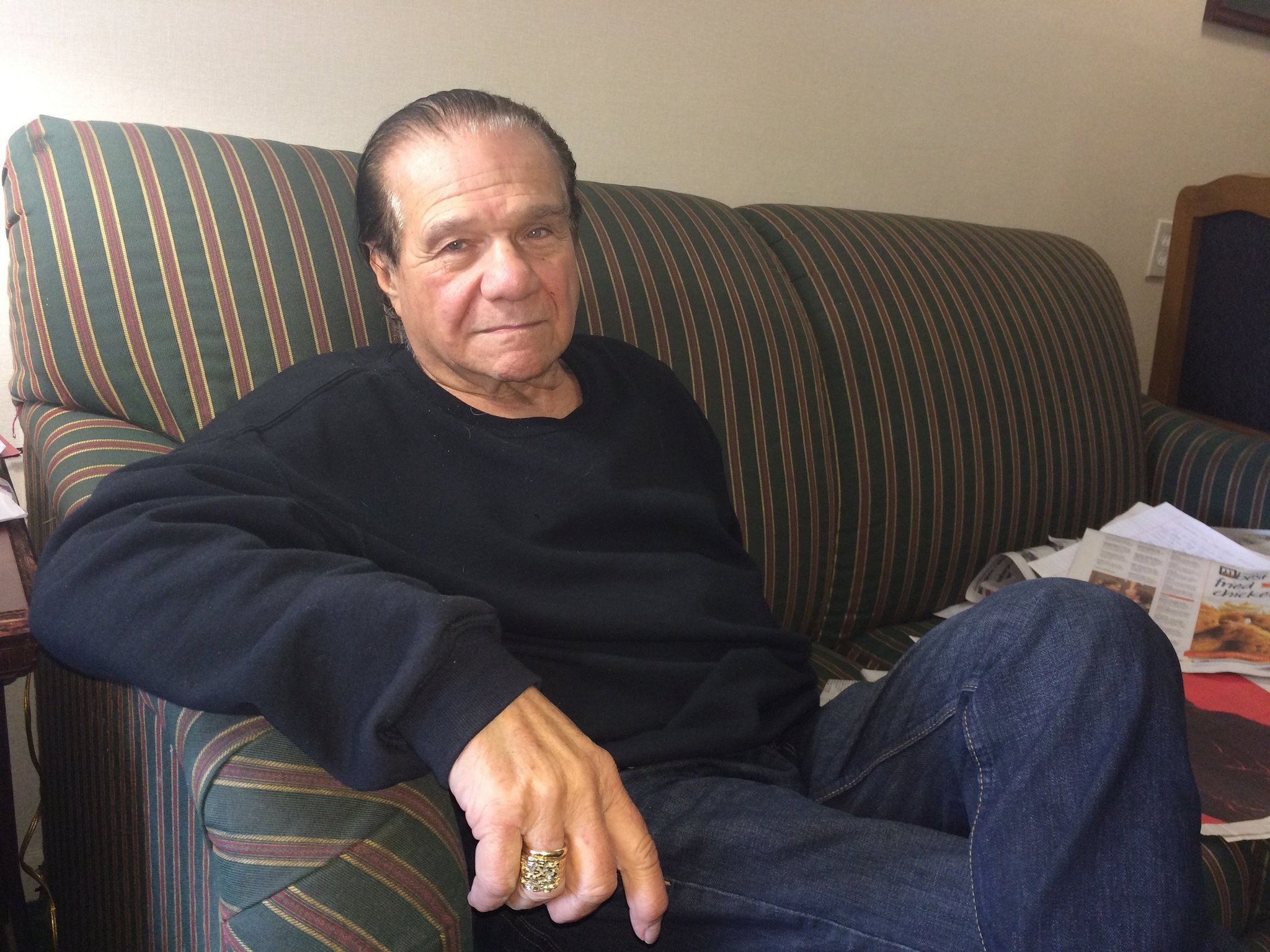
Don Elbaum. Photo credit: Eric Woodyard/MLive.com
Mordey, who died in 2004 at age 67, is a repeat selection for me because he is considered one of Australia’s best and most relevant promoters. Among others, he promoted Hall-of-Famers Jeff Fenech and Kostya Tszyu, as well as champions Jeff Harding, Lester Ellis and Lovemore N’dou and contenders Joe Bugner, Troy Waters, Guy Waters and Shannan Taylor – a large chunk of the continent’s best talent of the era. That resume moved me to place a check by his name this year and will do so every year until he is inducted.
I invested another repeat check for trainer Dai Dollings, a Welshman who was described in one article as “The Freddie Roach of his day.” As a boxer, he bridged the gap between the bare-knuckle and gloved eras and when he became a trainer, he was considered among the very best at his craft during a particularly deep era. He famously mentored future Hall-of-Famer Ray Arcel and it is from Dollings’ example that Arcel developed his own keen eye for detail and strategy.
“Dollings was a smart trainer,” Arcel said in Ronald K. Fried’s book “Corner Men.” “He was a fella who’d study the styles of the different boxers. And of course when I started with him, that was the one thing he inspired me with – everyone’s style is different, so you must understand the different styles of your opponents. And we used to make a great study, watching these fellas work.
“Dollings also taught Arcel to treat each fighter as a unique individual,” Fried wrote. “Arcel never forgot the lesson. ‘Each young man that came to me, I made a complete study of his personal habits, his temperament,’ says Arcel. ‘Because there are some people you could scold and some people you had to be careful with. And you treated each person as a different individual. No two people are alike. What you tell one fella, you couldn’t help the other fella with. And some fellas could develop mental energy, and others couldn’t. And you had to find out how to teach him’ ”
If Dollings is good enough for Arcel, he’s more than good enough for me.
As was the case with Dollings and Elbaum, I voted for longtime Top Rank publicist Lee Samuels based on testimonials from others but, unlike the others, I also factored in my own limited experience with him. Samuels, who began his career as a sportswriter for the Philadelphia Bulletin in the mid-1970s, has logged more than 35 years with Top Rank and, in that time, has earned a reputation for industriousness, promptness and accuracy, assets for which I can personally vouch. When I contacted Samuels about information for some research I was doing for CompuBox, he responded with a speed and a completeness that was much appreciated. Of course my experience alone didn’t put him over the top; it was just further proof that the narrative posited by others was correct.
Part of that narrative was provided by RingTV.com’s Michael Woods in an article that ran on NYFights.com in August 2016: “He is a gentle soul, faithfully and cheerily performing his duties in a manner which is, if not nearing extinction, then heading that way. Samuels does his thing in an artful way, ever decent, never overbearing, or condescending, or making himself a focal point. He’s a pro’s pro.” I agree.
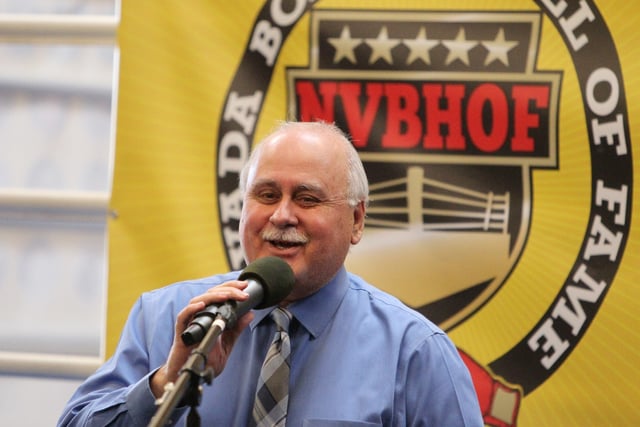
Lee Samuels. Photo credit: Erik Verduzco/Las Vegas Review/Journal
His work has earned accolades from the boxing community he has served so long and so well: BWAA awards in 2006 (Marvin Kohn Good Guy) and 2013 (Barney Nagler Long and Meritorious Service), the WBC Legends Award in 2012 and induction into the Salem County (New Jersey) Sports Hall of Fame in 2014 and the New Jersey Boxing Hall of Fame in 2018. One more honor should be added to his resume: IBHOF inductee. Hopefully one appearance on the ballot will be all Samuels needs and, if it’s not, then he’ll never be shut out as long as I’m a voter.
As always, affixing the fifth and final check was the toughest task. After consulting with several people whose opinions I respect (because I don’t know everything about everything), I used the final check for Canada’s Guy Jutras.
Look up Jutras’ name on BoxRec.com and he is one of the few who boasts five different roles – boxer, referee, judge, supervisor and inspector. His least prominent role was that of boxer – his pro career lasted a little more than 10 months but, for whatever it is worth, he won all five bouts (three by KO). But his 54-year career as a judge and referee make up the crux of his case, as he judged (according to BoxRec) 72 world title fights between 1980-2007 and refereed three world title contests, including Eusebio Pedroza’s foul-fest against Juan LaPorte, in which he correctly deducted multiple points from the Panamanian champion. A member of the WBA since March 1979, Jutras served as the sanctioning body’s chairman of officials from 1998-2008 and has functioned as Canada’s equivalent of Harold Lederman as an “unofficial official” for domestic broadcasts. At 87, Jutras remains active in the sport and, in my opinion, would be a terrific addition to the Hall of Fame roster.
With that ballot completed and signed, I moved on to the Observers. The variety of occupations within this sphere isn’t as wide as that of the Non-Participants and the deliberative process wasn’t as time-consuming because I was more familiar with the names and the resumes.
One check was given to Australian Ray Mitchell for his long and varied career in boxing, which earned him an MBE (a Member of the Most Excellent Order of the British Empire) and a spot in the Australian National Boxing Hall of Fame in 2005 as a Non-Participant. He was a historian who was a member of the International Boxing Research Organization, a TV commentator, a writer who also authored several books, a judge whose bouts included two world title fights (Lionel Rose-Alan Rudkin in 1969 and Muangchai Kittikasem-Tacy Macalos in 1989) and a referee who (according to BoxRec) officiated 557 matches between 1957 and 1986, including contests involving Tony Mundine, Alvaro “Yaqui” Lopez, Ralph Dupas, Hector Thompson, Rocky Mattioli, Barry Michael, Paul Ferreri and Rocky Gattellari. I’ve long been impressed by people whose resumes extend into multiple areas and this variety moved me to invest a checkmark in Mitchell, who died in 2005 at age 86.
Repeat checks were given to Ham Fisher, best known for drawing the long-running comic strip Joe Palooka, to longtime sportswriter/broadcaster Antonio Andere (who wrote for Esto, Mexico’s most important newspaper) and to writer/historian Mario Rivera Martino, who filed his first report with The Ring Magazine in 1945 and contributed for decades afterward.
The fifth and final check for the Observers was given to someone who is appearing for the first – and maybe the only – time: Teddy Atlas.
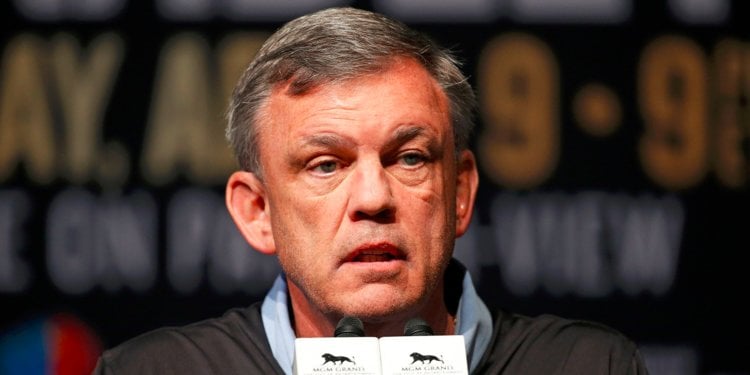
Teddy Atlas. Photo credit-John Locher/Associated Press
By being placed among the Observers, Atlas’ candidacy involves his work as a broadcaster and not as a trainer, which would have put him on the Non-Participants ballot. I believe this is a wise choice, for he may be better known for TV career than for his work with the young Mike Tyson, Michael Moorer, Timothy Bradley and Alexander Povetkin, among others.
Anyone who read his autobiography or saw him on TV knows he’s intense, opinionated and volatile. However his showmanship has never concealed his deep knowledge of the sport, in terms of the physical, the technical and especially the psychological, thanks to his long association with Cus D’Amato. Like Gil Clancy during the 1980s and 1990s, Atlas’ common-man delivery created an indelible connection with his audiences but, unlike Clancy, he was (and remains) a polarizing figure. His record as a broadcaster, however, more than merits induction.
Along with his 21 years at ESPN, Atlas was ringside for five Olympics (Athens in 2000 through Rio De Janeiro in 2016) and was the BWAA’s 2001 recipient of the Sam Taub Award for excellence in broadcast journalism. But Atlas was never a journalist in the classic sense; he was an expert and astute observer of ring strategy and, in later years, a passionate advocate for reform and a vociferous critic of what he interpreted as injustice (especially in the case of errant scorecards). Admirers have labeled him one of the “consciences of boxing” and have floated his name as a candidate for national commissioner, should that post ever be created.
As a voter, I do my best to place record and accomplishment over personal feelings – good or bad. That said, I have high regard for Atlas, as an expert and as a person, and my perspective was shaped not only by my observations as a viewer but also by my years being at ringside doing punch counts during many ESPN broadcasts in the mid-to-late-2000s. His record of accomplishment as a broadcaster and the expertise that shaped his work is more than enough for me to vote for him. I’m sure many of my colleagues will do the same.
In the second and last installment, I will reveal my votes – and my reasoning – for the final two categories of the Class of 2019 ballots, the “Late Era” Old-Timers and the Moderns.
*
Lee Groves is a boxing writer and historian based in Friendly, West Virginia. He is a full member of the BWAA, from which he has won 16 writing awards, including two first-place awards, since 2011. He has been an elector for the International Boxing Hall of Fame since 2001 and is also a writer, researcher and punch-counter for CompuBox, Inc. He is the author of “Tales from the Vault: A Celebration of 100 Boxing Closet Classics” (available on Amazon) and the co-author of the newly released book “Muhammad Ali: By the Numbers” (also available on Amazon). To contact Groves about a personalized autographed copy, use the email [email protected] or send him a message via Facebook.
*
Struggling to locate a copy of The Ring Magazine? Try here or
Subscribe
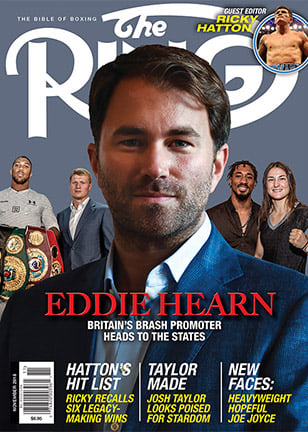
You can order the current issue, which is on newsstands, or back issues from our subscribe page.















